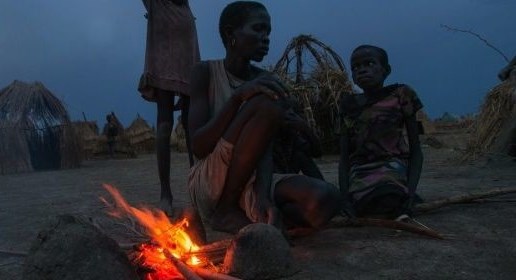Aid agencies continue to scale up humanitarian operations in refugee camps and displaced areas in South Sudan over the past week, especially in Upper Nile and Equatoria regions.
The number of refugees inside South Sudan is now estimated at 297,150 as of 30 June 2018. The number of South Sudanese IDPs including 200,571 in UNMISS Protection of Civilians sites is estimated at 1.88 million as of 12 July 2018.
In total the number of refugees in neighbouring countries as of 30 June 2018 is estimated at 2,488,756.
On Thursday, UNHCR released a situation report covering the period of 01-15 July 2018.The information below represents a selection of highlights from the report:
In Batil, Gendrassa and Kaya refugee camps, UNHCR and its partner Save the Children International (SCI) trained 110 (47 women, 63 men) Community Child Protection Committees on general protection and Child, Youth Protection policies and how to handle children/youth issues that require protection interventions, causes of family separation and reunification processes.
In Ajuong Thok and Pamir refugee camps, UNHCR partner Lutheran World Federation (LWF) conducted trainings on child rights, referral mechanism and roles of different committees in camps to 84 (39 girls, 45 boys) members of child rights clubs, 52 (19 women, 33 men) youth between 15 and 20 years old and 88 (53 women 35 men) members of Parent-Teacher Associations (PTAs).
In Yida, UNHCR inaugurated a primary school for the host community. The inaugural event was led by UNHCR’s Deputy High Commissioner and attended by senior government official including the Commissioner for Refugee Affairs, Jau County Commissioner and the Advisor to the State Governor. UNHCR supported the construction of a primary school for Yida host community in 2017 in coordination with local and state authorities.
During the reporting period, 847 newly arrived refugees in Pamir and 284 new arrivals in Ajuong Thok received Core Relief Items (CRIs) to address their basic needs. The CRIs kit included mosquito nets, buckets, jerry cans, sleeping mats, soap, kitchen set, plastic sheeting and blankets. Also, 255 newly arrived women and girls received sanitary materials in both camps.
In Kaya and Gendrassa refugee camps, UNHCR’s partner Agency for Technical Cooperation and Development (ACTED) provided assorted vegetable seed kits to 438 refugee women engaged in vegetable production. This intervention increases access to nutrient-dense vegetables and promoting dietary diversity for mother support groups whose households are at high risk of malnutrition.
UNHCR led a joint mission to Tombura County, 241 kilometres from Yambio to assess the situation of IDPs who fled from Nagero County as a result of fighting between government and opposition fighters in early June 2018. The mission included other humanitarians such as the Office for the Coordination of Humanitarian Affairs (OCHA), World Food Programme (WFP), Food and Agriculture Organisation (FAO), and World Vision International (WVI). The objective of the mission was to take and distribute assistance to the affected population of 4,131 families (18,563 individuals).
In Tombura County, UNHCR partner World Vision International distributed non-food items (NFIs) to 1,923 IDPs. NFIs included tarpaulin, kitchen sets, blankets and sleeping mats.




